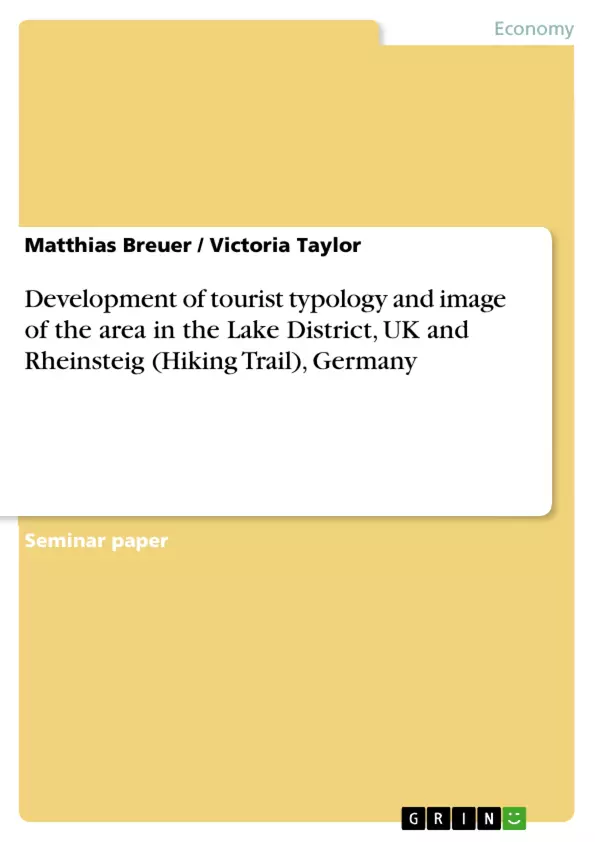The aim of this report is to compare the history of tourism in two areas and show how tourist typology and image has changed over time. The areas chosen are the Lake District in the UK and the Rheinsteig Hiking Trail in Germany. These areas were chosen due to nationality of the authors and their personal knowledge of the areas.
Understanding the image of an area and the tourist typology is important in understanding why destinations rise and fall in popularity over time. Numerous models have been created to attempt to define and predict the evolution of tourism including Butler‟s model of evolution of tourist areas and Plog‟s psychographic scale. This report aims to evaluate whether these models can be used to define the tourist typology within the areas selected and to show how it has developed over time.
Inhaltsverzeichnis (Table of Contents)
- Introduction
- Methods
- Background
- Lake District - General Information
- History of Tourism in the Area
- Rheinsteig - General Information
- History of Tourism in the Area
- Results
- Burkart and Medlik, 1974
- Plog's Model
- Butler's Model
- Conclusions and discussion
Zielsetzung und Themenschwerpunkte (Objectives and Key Themes)
The report aims to compare the historical development of tourism in the Lake District, UK and the Rheinsteig Hiking Trail, Germany, highlighting changes in tourist typology and image over time. The authors, who are from these regions, utilize established models of tourism evolution, including Butler's model and Plog's psychographic scale, to assess their applicability in defining and predicting the evolution of tourism in these specific areas.
- Comparative analysis of tourism history in the Lake District and Rheinsteig Hiking Trail.
- Evolution of tourist typology and image in both locations.
- Application of existing tourism models (Butler's, Plog's) to understand historical tourism development.
- Significance of natural and cultural heritage in shaping tourism patterns.
- Impact of infrastructure and accessibility on tourism growth.
Zusammenfassung der Kapitel (Chapter Summaries)
The introduction provides the purpose of the report, which is to compare the history of tourism in the Lake District and the Rheinsteig Hiking Trail and explore how tourist typology and image have evolved over time. The authors also discuss the relevance of understanding these factors in predicting destination popularity. Chapter 2 outlines the methodology used for data collection, including information sources such as tourist boards, research reports, and internet resources. Chapter 3 provides detailed background information on both areas, including general information, historical timelines, and tourist statistics. Chapter 4 presents an analysis of the two areas using existing tourism models like Burkart and Medlik's, Plog's, and Butler's. The chapter aims to evaluate how these models reflect the observed development of tourism in the Lake District and Rheinsteig.
Schlüsselwörter (Keywords)
The report focuses on nature-based tourism, tourist typology, tourism image, historical development, and the application of tourism models like Butler's and Plog's to understand the evolution of tourism in the Lake District, UK, and the Rheinsteig Hiking Trail, Germany. It also explores the influence of natural and cultural heritage, infrastructure, and accessibility on tourism growth in these areas.
- Arbeit zitieren
- B.Sc. Matthias Breuer (Autor:in), Victoria Taylor (Autor:in), 2010, Development of tourist typology and image of the area in the Lake District, UK and Rheinsteig (Hiking Trail), Germany, München, GRIN Verlag, https://www.grin.com/document/214055



